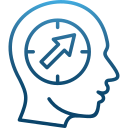High-Intensity Focus Drills You Can Master
Sit safely with a candle at eye level and a soft, steady gaze. Rest attention on the flame’s shape, color, and subtle movements. When afterimages arise, observe them without strain. If attention slips, gently return, training non-reactive precision without frustration.
High-Intensity Focus Drills You Can Master
Count inhales from one to nine, then reset. Lose track, and begin again with kindness. Add difficulty by marking each exhale with a silent word. This dual task strains attention constructively, revealing micro-lapses and teaching smooth, confident recovery on the spot.
High-Intensity Focus Drills You Can Master
Repeat a concise mantra for timed sprints, tracking beads or finger taps. If you notice automaticity without awareness, pause, re-commit, and restart the sprint. This deliberate reset strengthens meta-awareness, ensuring your mantra becomes a living anchor rather than background noise.







